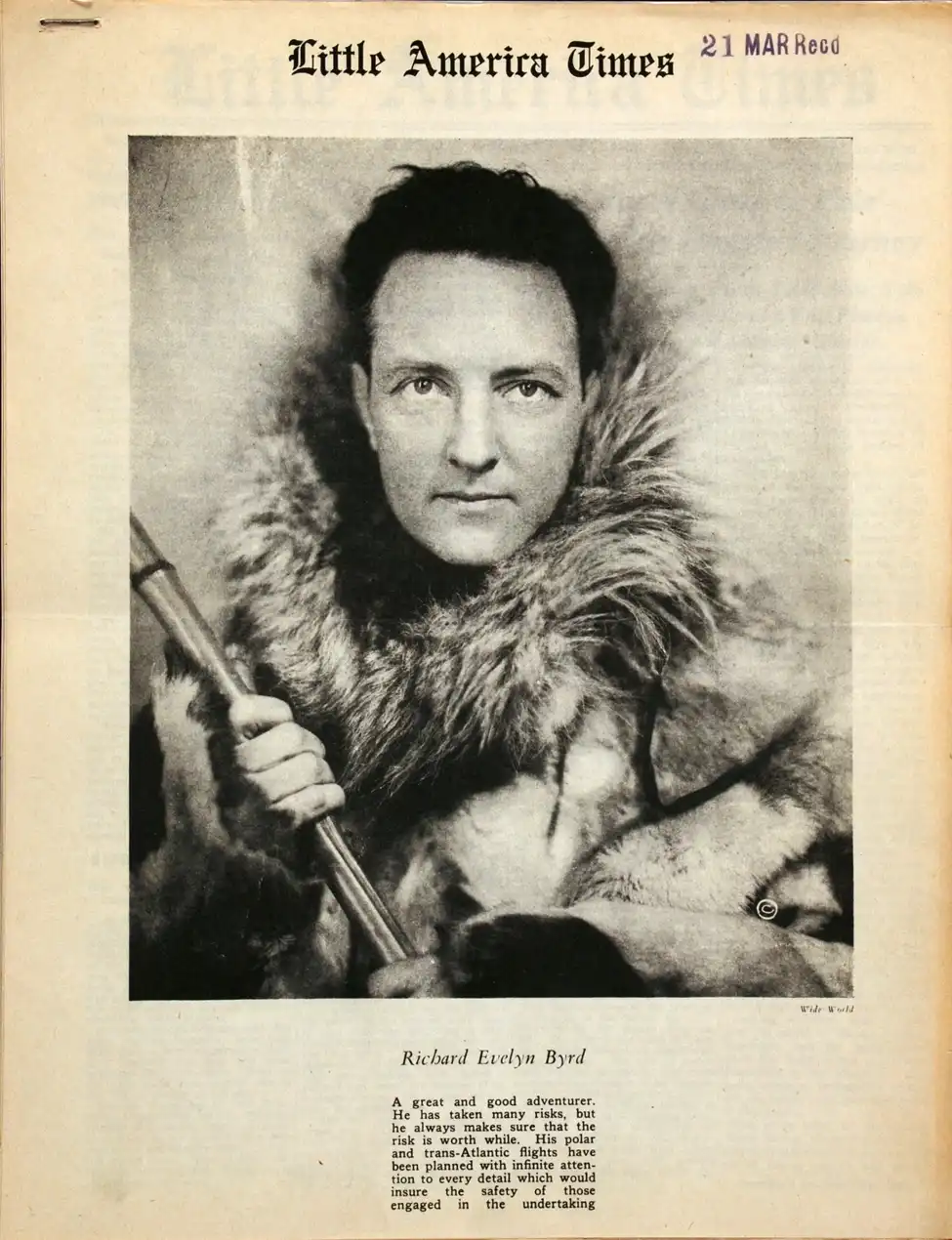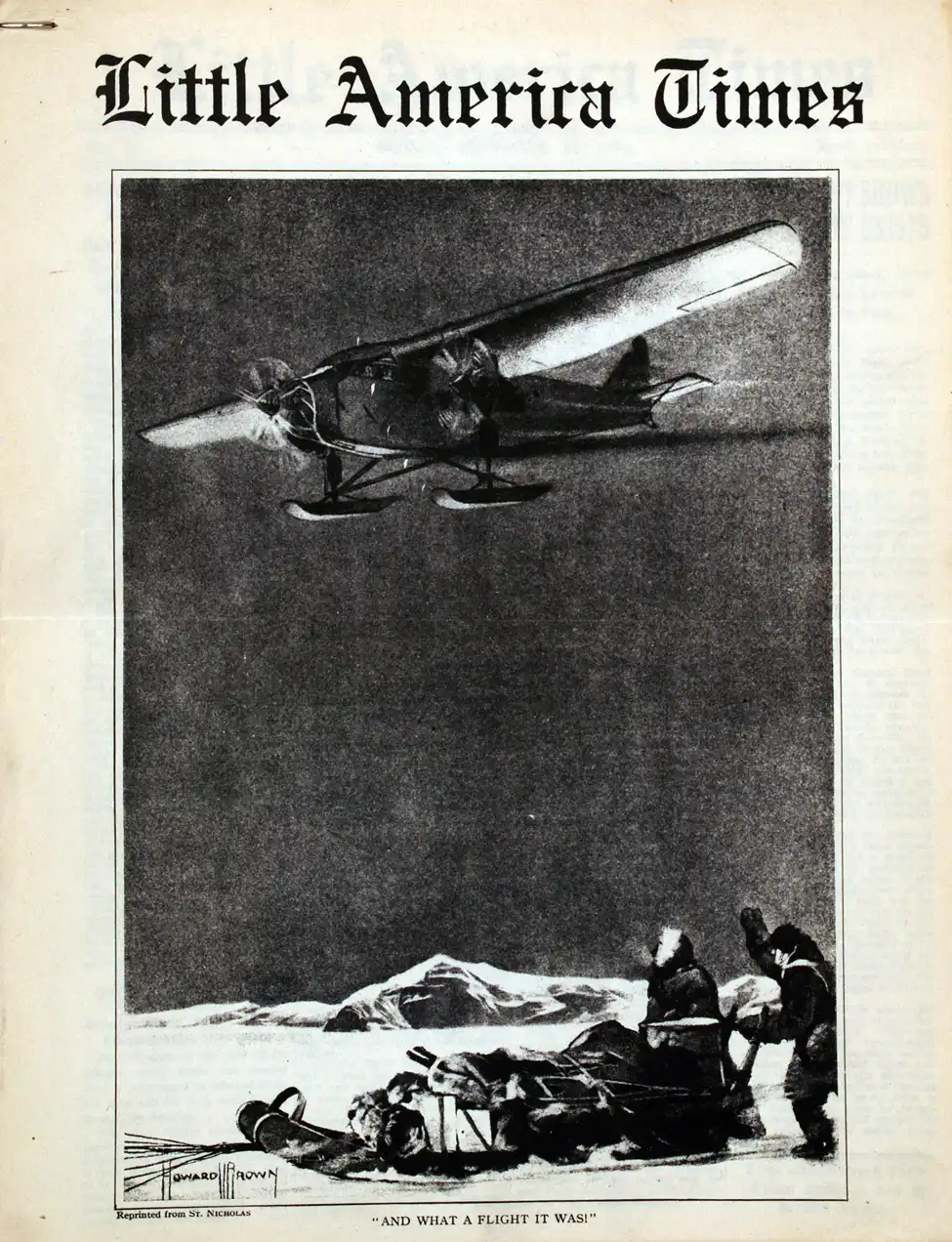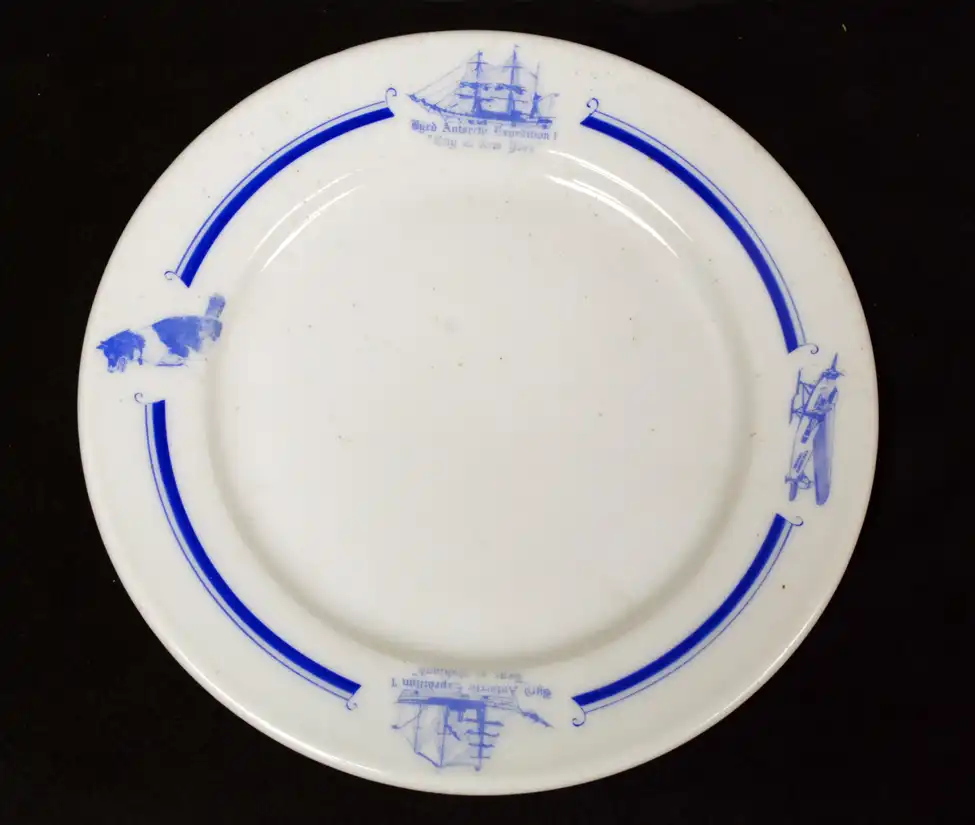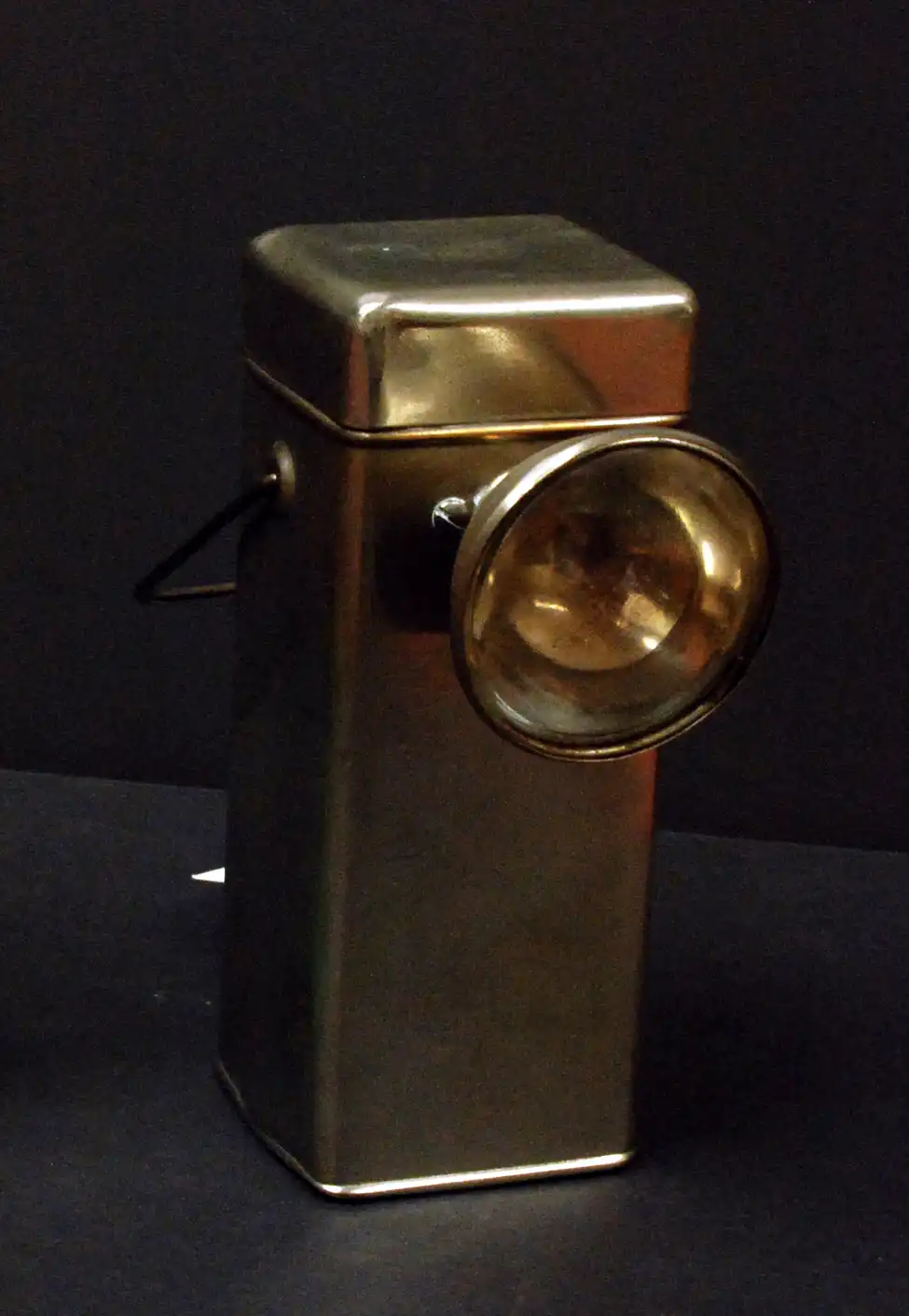Case 21
- Americans in Port, Little America Times

Little America Times. New York: August Horowitz, 31 January 1935.
A series of temporary Little America Times bases were built for each Byrd Antarctic mission. The purpose of these was at first to chart the Ross Sea and then the rest of the coast of Antarctica. These bases allowed the U.S.A. to keep its strategic and economic options open for future claims on Antarctic territories, at a time when they had no official intention of doing this.
Antarctic expeditions became a showcase for American accomplishments in exploration and science. Following huge advances in communications, radio and telegraph were able to be used to lessen the isolation endured by previous explorers. Events on the ice could be updated frequently by radio and in the news sheet Little America Times.
Published from 1933 to 1935, Little America Times offered its readers illustrations, photographs, news items and stories, all in support of Rear Admiral Byrd and flyer Lincoln Ellsworth (1880–1951).

Little America Times. New York: August Horowitz, 30 November 1934.
Little America Times was edited by August Horowitz (1910–1988) in New York. Horowitz, who later changed his name to Howard, was employed in the American Boy Scouts movement. He was a keen supporter of the second Byrd expedition, and was largely responsible for founding the American Polar Society.
Horowitz published the news sheet privately, with less than 200 copies produced. He went on to be first editor of the Polar Times. Little America Times covered many stories about the ports and people of Dunedin. This issue celebrates the successful flights undertaken in November 1934 of Byrd's Curtiss-Wright Condor bi-plane. These flights enabled the mapping of Marie Byrd Land. Byrd’s plane was transported to Antarctica via Port Otago on the Jacob Ruppert.

Memorabilia from the Byrd Antarctic Expedition, ca. late 1920s to early 1930s; plate.

Memorabilia from the Byrd Antarctic Expedition, ca. late 1920s to early 1930s; lamp.
Plate and lamp courtesy of Port Chalmers Regional Maritime Museum.



